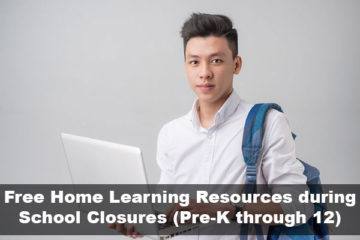Syllabus Planning: 3 Tips for the Upcoming School Year
A strong course syllabus is key to helping your students get the most out of their education. These documents are used to communicate everything students need to know about a given course to be successful.
Outlining goals and objectives at the beginning of the course gives students insights into what your course will cover so they can ensure it aligns with their academic goals. Often, instructors include deadlines and detailed policies in their course syllabus to reduce confusion and limit conflicts with students later in the semester. Syllabi also include lists of the books and resources students will need to get prior to the course so they are prepared from day one.
This guide will explore how to create a detailed, well-organized syllabus:
- Make your syllabus comprehensive.
- Identify and develop accessible resources.
- Include a detailed calendar.
Keep in mind that a syllabus isn’t meant to be a resource just for your students. It can also help guide your course planning, keeping you on track all semester long. To get the most out of this document (for you and your students), work to make it as detailed as you can.
Make your syllabus comprehensive.
Your students should be able to turn to your syllabus with almost any question about the structure of your course and find an answer. Not only does this prevent you from receiving the same question time after time, but it can improve student performance. By including helpful resources and insight about course policies, students will be able to enhance their learning and better prepare for assessments.
Skyepack’s guide to building a course syllabus recommends including these items:
- Logistics like the course and instructor names, class location, and term or semester
- Learning outcomes and course objectives
- Deadlines
- Class policies and procedures
- Grading breakdown
- Weekly overview of workload
- Required materials
If students can access your syllabus digitally, you might also include links to relevant websites that students can use during the class. For example, if you teach a French class, consider linking to websites they can use to quiz themselves on vocabulary words or practice constructing sentences.
Identify and develop accessible resources.
The textbooks you choose for your course contain critical information that students need to learn to succeed academically. But, textbooks can be very expensive, and they increase in price year after year. In fact, textbooks can be so expensive that 25% of students need to pick up extra hours at their jobs to pay for them, meaning they have less time in their busy schedules to study and prepare for class.
Because it can be difficult for some students to afford required course materials, they might skip purchasing them or rely on sharing textbooks with other students. Obviously, these scenarios are not ideal or conducive to student success. Choosing accessible materials like open educational resources can help you make your students’ lives easier and boost their performance in your class.
Open educational resources (OERs) are open-access resources that anyone with an internet connection can use or even create and edit themselves. Because anyone can make an OER, they tend to require a little extra vetting compared to a standard textbook or other academic resources. When choosing OERs, use these considerations to evaluate them:
- Gauge the authority. Look into the author or authors of the resource to ensure that they have the proper qualifications to back up the claims they make. The best sources are people who have extensive academic and professional experience in the subject area they cover in the resource.
- Check that it’s accessible. Financial accessibility shouldn’t be your only concern—make sure materials are truly accessible for all students. For example, for students with learning disabilities like dyslexia, look for OERs with supplemental audio or video elements that convey written information in another way.
- Make sure the information is objective. Avoid content with an obvious bias that presents information in a skewed way. Keep this in mind when you research the author, noting any affiliations they have that could influence the way they present the content.
OERs can be an invaluable addition to your course materials, helping students freely access the resources they need to succeed in school. However, finding the perfect OERs tailored to your course can be time-consuming, especially if you need to edit the resources. Partnering with a service that can source, evaluate, and assemble OERs for your class can help streamline the process.
Include a detailed calendar.
Your students lead busy lives, and they typically have several other classes to balance. Adding a well-organized, visual calendar can help students track your course’s schedule at a glance. By outlining specific projects, tests, and quiz dates, students will be better equipped to prepare and focus on studying for assessments. Make sure to include the full calendar in the syllabus rather than having it live in a separate place.
Your calendar should include the following details:
- Readings. Outline the readings students will need to complete prior to coming to class each day. Maybe sure to designate specific page numbers and sections so students know exactly what to read.
- Test, quiz, and project due dates. These assignments typically account for a larger portion of students’ grades and they usually need more time to prepare for them. Add them to the calendar so students are aware of them at the beginning of the semester.
- Skills, lessons, or units. Mark the start of each new unit and the dates that students will learn specific skills or lessons. This will help them identify which resources they need to study for upcoming tests and they can even get ahead on content in the next unit.
If you want to encourage students to get involved in other extracurricular activities, be sure to include important dates like school-wide fundraisers and student involvement opportunities. Keep in mind that as the semester progresses, you’ll likely need to change some things about your calendar, like pushing back a test date. Be sure to build a little wiggle room into your calendar so you can stay flexible and implement backup plans.
Your syllabus can be a valuable tool for both you and your students. Make sure your syllabus incorporates everything students might need to know about your class, from completing a microcredential course before your class starts to information about where to purchase class resources.



